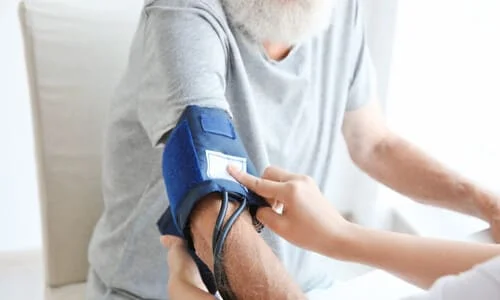Book a Consultation
Find out why so many clients appreciate the amount of work we put into their case.
"*" indicates required fields
Call 24/7
 In 2020, the National Highway Traffic Safety Administration (NHTSA) revealed accident statistics for the year 2018. In that report, it was found that more than six out of every 10,000 licensed drivers in Utah over the age of 60 get into traffic accidents in a single year.
In 2020, the National Highway Traffic Safety Administration (NHTSA) revealed accident statistics for the year 2018. In that report, it was found that more than six out of every 10,000 licensed drivers in Utah over the age of 60 get into traffic accidents in a single year.
That doesn’t sound like much. But when you consider that Utah is a state with more than 2.2 million legal drivers and that 18.6% of them are senior citizens, the statistics start to get a little bit worrying.
Doing some math with these numbers, we find that potentially over 410,540 of Utahn drivers are senior citizens. And if six in ten thousand drivers are expected to get into accidents, that means at least 246 or so senior drivers need to make car accident claims every year.
That’s a lot, but it gets even worse when you remember these are just the drivers. Seniors can still get injured in car accidents as passengers or pedestrians.
Thankfully, most seniors (those over 65) have Medicare plans to help them recover, but they may also seek assistance from a Salt Lake City car accident law firm. In a no-fault state like Utah, there are a few things to keep in mind before you can turn to Medicare for your car accident injury coverage.
The short answer would be yes. Utah is, as previously stated, a no-fault state and thus requires car accident victims to turn to their respective Personal Injury Protection (PIP) policies before pursuing compensation through other channels.
This means you are legally expected to maintain PIP insurance. And by extension, this also means that if you have a Medicare plan, you can only really use it after you have expended your PIP coverage.
A more in-depth answer to the same question, however, would be yes, if the no-fault system applies to you. This is because Utah, like most no-fault states, sets two thresholds that, when one is surpassed, allow insurance claimants to step outside the PIP system.
Medicare beneficiaries are allowed to use their specific plans as soon as one of these thresholds is met.
At its core, Medicare is a government insurance program. Specifically, it is one that offers certain healthcare benefits to people over the age of 65 as well as those under 65 who suffer from end-stage renal disease (ESRD) or Amyotrophic Lateral Sclerosis (ALS).
When taken in the context of accident and injury law discussions, Medicare is a secondary payer. This means it provides the benefits it offers only after the injured party’s primary insurance plan reaches its limits.
Medicare is divided into four different packages, called “parts,” each of which offers specific types of coverage. The most common of these packages – sometimes referred to as Original Medicare – includes parts A and B.
Medicare Parts C and D are plans with “add-on” charges to cover the benefits they provide that aren’t found in Parts A, and B. Part C usually includes “quality of life” items such as fitness plans and specialized medical treatment, while Part D pays for prescription drugs.
For practical purposes, Medicare covers most of the same things PIP insurance does with regard to injury. As such, Medicare cannot cover lost income, survivor benefits, and funeral expenses, which may be covered by PIP.
Medicare Part A provides support for a policyholder’s inpatient treatment at approved medical facilities, typically without monthly premiums. As long as you meet the criteria – that is, if you are 65 and up or have a qualifying disability – you have access to this coverage.
Part A covers the costs of inpatient care for up to sixty days at any hospital that accepts Medicare. However, one caveat to keep in mind is that coverage can only start after you meet a deductible of at least $1,484.
The second part of Original Medicare, Part B, has monthly premiums and a yearly deductible of $203, which is in contrast to the free Part A. In exchange for these monthly premiums, enrollees receive coverage for medically necessary services and preventive services.
Part B is the aspect of Medicare most often referred to when beneficiaries need health services after a car accident. Plenty of services, including nurses, hospital beds, and oxygen tanks, can be considered medically necessary even for home use.
Keep in mind, however, that Part B plans do not always pay for full coverage of expenses. In most cases, the insurance provider will require the insured to copay around 20% of costs.
Part C, also known as Medicare Advantage (MA), encompasses the same coverage as Original Medicare and includes additional insurance such as dental coverage, hearing and eyesight coverage, fitness programs, and even mental health programs.
In most cases, a Part C plan also includes prescription drugs, which is the standalone offering under Part D plans.
The final type of plan under Medicare, Part D, is a prescription medication plan. It is an addition to Original Medicare, which means applicants can only get a Part D plan if they already have Parts A and B.
Insurers that offer this part maintain a list of approved prescription drugs known as a “formulary,” which varies across plans. A beneficiary’s specific plan covers the cost of any medication on the list that they are prescribed to use.
Medicare offers its aid under the assumption that claimants do not have the means of paying for the cost of healthcare services themselves. If, then, a claimant receives compensation for the same services their plan covers, they are obligated to pay Medicare back.
This is because Medicare, and medical insurance in general, is intended as a means to provide healthcare assistance and not as a means to award the injured party for damage sustained in the accident in the same way punitive damages are.
Medicare is strict about enforcing this reimbursement policy and attaches a lien (a legal claim over assets) on any proceeds you might acquire from an at-fault party up to the cost of healthcare services they covered on your behalf.
However, there are times when you do need the money from such proceeds to cover expenses on your part that Medicare was unable to. In this event, you would have to negotiate with a representative from Medicare to lower the lien.
When this happens, one of four outcomes occurs:
If you’re having trouble getting coverage with Medicare in Utah, you’re not alone. The process can be confusing, certainly stressful at the very least, and if you’ve been injured, tiring and painful.
You shouldn’t have to suffer while pursuing compensation for your healthcare expenses. Give yourself some well-earned slack, and let us do the legal heavy lifting for you at Valley Law Accident and Injury Lawyers.
Lead attorney Brigham Richards brings over a decade of experience in personal injury cases to Valley Law, where he works to give you the highest, fairest settlement possible out of your car accident claim.
Call us today at 801-810-9999 or contact us via our online form found here. We offer free, no-obligation consultations so you can get your case moving forward and your compensation coming in.
Get in touch


2021 and 2022 Gold Winner for Top Law Firm by Salt City Best
Call 24/7 801-810-9999